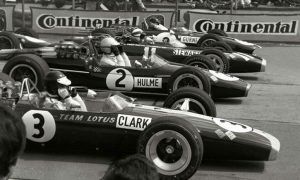Have you ever been curious to learn more about what we can see when a Formula One car is devoid of its nosecone? F1i technical expert Nicolas Carpentiers provides you with images and explanations of the main elements that make up the front bulkhead.
PITOT TUBES
Set up on top of the nosecone, Pitot tubes, which were originally used in aeronautics, determine the velocity of air travelling on the car by measuring the static and stagnation pressures via a couple of orifices. Knowing how fast the air flows on the car’s bodywork is crucial for teams to assess the downforce it generates.
MASTER CYLINDERS
Both master cylinders – one is linked to the front brake callipers, the other to the rear – comprise a cylinder and a piston, which operate the related brake circuit when the driver steps on the pedal. Each master cylinder also features a translucent plastic reservoir where brake fluid is stored.
Basically, the device converts the mechanical brake pedal force applied by the driver into hydraulic pressure, which is then transferred to the wheels via flexible brake pipes and hoses. The under-pressure brake fluid is pushed into the callipers’ cylinders, which in turn force the brake pads to squeeze the brake discs and slow the car down. Since 2014, the technical regulations include a new rule that has allowed teams to use electronic brake assistance on the rear wheels, known as the brake-by-wire concept.








